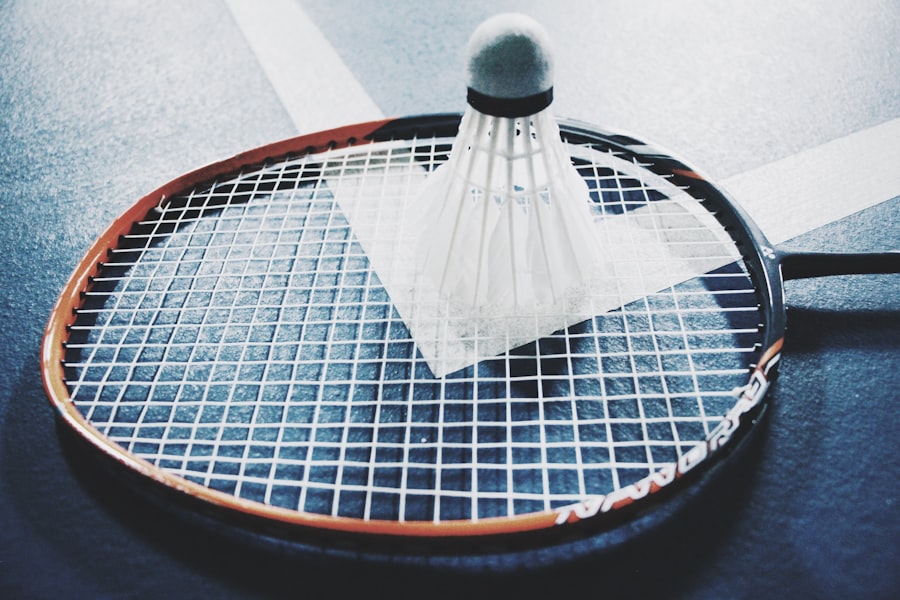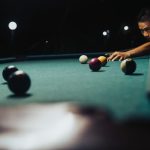Mastering the Art of Badminton: Tips for Success
Description
Badminton is a fast-paced racquet sport that has gained immense popularity worldwide, characterized by its unique blend of agility, strategy, and precision. The game is played either in singles or doubles format, with players using a shuttlecock and racquets to score points by landing the shuttlecock in the opponent’s court. The origins of badminton can be traced back to ancient civilizations, but it was formalized in the mid-19th century in England.
The sport is governed by the Badminton World Federation (BWF), which sets the rules and organizes international competitions, including the prestigious All England Open and the Olympic Games. At its core, badminton is played on a rectangular court divided by a net. The dimensions of the court vary slightly between singles and doubles play, with the latter requiring a wider area.
Understanding the basic rules, such as scoring systems and service regulations, is crucial for anyone looking to engage in the sport. Players must also familiarize themselves with the various types of shots—such as clears, drops, smashes, and drives—that form the foundation of effective gameplay.
Key Takeaways
- Badminton is a fast-paced racket sport played with a shuttlecock, requiring agility, speed, and precision.
- Essential skills and techniques in badminton include grip, stance, and stroke mechanics for effective shots.
- Mastering footwork and movement is crucial for covering the court efficiently and maintaining balance during play.
- Improving hand-eye coordination is key to accurately hitting the shuttlecock and anticipating opponents’ moves.
- Utilizing strategy and tactics involves understanding opponents’ weaknesses, exploiting court positioning, and varying shot selection.
Developing Essential Skills and Techniques
To excel in badminton, players must cultivate a diverse set of skills and techniques that enhance their overall performance. One of the most fundamental skills is mastering the grip on the racquet. There are primarily two types of grips: the forehand grip and the backhand grip.
The forehand grip is used for most shots and involves holding the racquet as if shaking hands with it. In contrast, the backhand grip requires a different hand positioning that allows for effective shot execution from the non-dominant side. Practicing these grips consistently can lead to improved shot accuracy and power.
In addition to grip techniques, players should focus on developing their shot-making abilities. Each type of shot serves a specific purpose in gameplay. For instance, a clear shot is used to push the opponent to the back of the court, while a drop shot can catch them off guard by landing just over the net.
Smashes are powerful downward shots aimed at scoring points quickly, while drives are fast-paced shots that keep the shuttlecock low and forceful. By practicing these shots in various scenarios—such as during drills or match play—players can enhance their versatility on the court and adapt to different opponents’ styles.
Mastering Footwork and Movement

Footwork is an often-overlooked aspect of badminton that plays a critical role in a player’s success. Effective footwork allows players to position themselves optimally for each shot, ensuring they can respond quickly to their opponent’s actions. The foundation of good footwork lies in maintaining a low center of gravity and being light on one’s feet.
Players should practice moving in all directions—forward, backward, and laterally—while keeping their knees slightly bent and their weight balanced. One effective method for improving footwork is through shadow badminton drills, where players simulate movements without hitting a shuttlecock. This practice helps develop muscle memory for various footwork patterns, such as lunges, sidesteps, and quick pivots.
Additionally, incorporating agility drills—such as ladder exercises or cone sprints—can enhance speed and coordination on the court. By mastering footwork, players can not only improve their shot execution but also increase their overall court coverage, making it more challenging for opponents to score against them.
Improving Hand-Eye Coordination
| Activity | Duration | Frequency |
|---|---|---|
| Juggling | 30 minutes | 3 times a week |
| Catch and throw with a ball | 20 minutes | Every day |
| Playing ping pong | 45 minutes | 2 times a week |
Hand-eye coordination is a vital skill in badminton that directly impacts a player’s ability to hit the shuttlecock accurately and consistently. This coordination involves synchronizing visual input with motor responses to execute precise movements. To enhance this skill, players can engage in various drills that focus on tracking and timing.
For example, practicing with a partner who tosses or hits the shuttlecock at varying speeds can help players adjust their timing and improve their reaction times. Another effective exercise for improving hand-eye coordination is using a wall for solo practice. Players can hit the shuttlecock against the wall at different angles and distances, forcing them to adjust their positioning and timing with each return.
Additionally, incorporating other activities that require hand-eye coordination—such as playing catch with a ball or engaging in racquet sports like tennis—can further develop this essential skill. As players refine their hand-eye coordination, they will find themselves better equipped to handle fast-paced rallies and execute complex shots under pressure.
Utilizing Strategy and Tactics
In badminton, strategy and tactics are crucial components that can significantly influence match outcomes. Understanding how to read an opponent’s strengths and weaknesses allows players to devise effective game plans tailored to each match situation. For instance, if an opponent struggles with high shots, a player might focus on executing more clears and smashes to exploit this weakness.
Conversely, if an opponent excels at net play, it may be wise to adopt a more defensive strategy that emphasizes placement over power. Players should also consider their own playing style when developing strategies. Aggressive players may prefer fast-paced rallies that involve powerful smashes and quick movements, while more defensive players might focus on outlasting opponents through consistent shot placement and strategic positioning.
Analyzing past matches—both one’s own and those of opponents—can provide valuable insights into effective strategies that can be employed in future games. By combining tactical awareness with adaptability during matches, players can enhance their chances of success on the court.
Enhancing Physical Fitness and Endurance

Physical fitness is an integral aspect of badminton that cannot be overlooked. The sport demands a high level of cardiovascular endurance, strength, agility, and flexibility. Players often engage in rigorous training regimens that include aerobic exercises such as running or cycling to build stamina.
Interval training is particularly beneficial for badminton players since it mimics the stop-and-go nature of matches, allowing athletes to develop both aerobic and anaerobic fitness. Strength training is equally important for enhancing performance on the court. Focusing on core strength can improve stability during shots while upper body strength contributes to powerful smashes and serves.
Lower body strength is crucial for explosive movements such as lunges and jumps. Incorporating exercises like squats, lunges, planks, and resistance training into a fitness routine can help players build the necessary strength for competitive play. Additionally, flexibility training through stretching or yoga can prevent injuries and improve overall range of motion.
Mental Preparation and Focus
Mental preparation is often what separates good players from great ones in badminton. The ability to maintain focus during matches is essential for executing strategies effectively and responding to opponents’ moves with clarity. Visualization techniques can be particularly useful for mental preparation; players can mentally rehearse their shots and strategies before stepping onto the court.
This practice not only boosts confidence but also helps reduce anxiety associated with competition. Mindfulness techniques can also enhance focus during matches. Practicing deep breathing exercises or meditation can help players stay calm under pressure and maintain concentration throughout long rallies or tight games.
Developing a pre-match routine that includes mental warm-ups can further prepare players psychologically for competition. By cultivating mental resilience alongside physical skills, athletes can improve their overall performance and navigate high-pressure situations more effectively.
Continuing Education and Practice
The journey of mastering badminton is ongoing; continuous education and practice are vital for long-term improvement. Players should seek opportunities to learn from experienced coaches who can provide personalized feedback on technique and strategy. Participating in workshops or clinics can expose players to new training methods and insights that can enhance their game.
Regular practice is essential for skill retention and improvement. Setting specific goals—whether it’s perfecting a particular shot or increasing match play frequency—can help maintain motivation and track progress over time. Joining local clubs or participating in tournaments not only provides valuable match experience but also fosters a sense of community among players who share similar interests.
By committing to lifelong learning and consistent practice, badminton enthusiasts can continue to evolve as athletes while enjoying the sport they love.
If you’re a fan of Badminton, you may also be interested in reading about the latest update for Super Mario Run 3.0.9. This article discusses the new features and improvements in the popular mobile game. Check it out here for more information.
FAQs
What is badminton?
Badminton is a racquet sport played by either two opposing players (singles) or two opposing pairs (doubles), who take positions on opposite halves of a rectangular court divided by a net.
What equipment is used in badminton?
The primary equipment used in badminton includes a shuttlecock (also known as a birdie), badminton racquets, and a net. Players also wear appropriate footwear for the sport.
What are the basic rules of badminton?
The basic rules of badminton include serving diagonally, scoring points by landing the shuttlecock within the opponent’s court, and winning a match by winning two out of three games.
What are the health benefits of playing badminton?
Playing badminton can provide various health benefits, including improved cardiovascular fitness, agility, flexibility, and hand-eye coordination. It also helps in burning calories and promoting overall physical well-being.
What are the different types of badminton shots?
Some of the different types of badminton shots include the clear, drop shot, smash, drive, and the lob. Each shot has its own specific technique and purpose during a game.
What are the major badminton tournaments and events?
Major badminton tournaments and events include the All England Open Badminton Championships, BWF World Championships, Thomas Cup (men’s team event), Uber Cup (women’s team event), and the Olympic Games. These events feature top players from around the world competing at the highest level.





